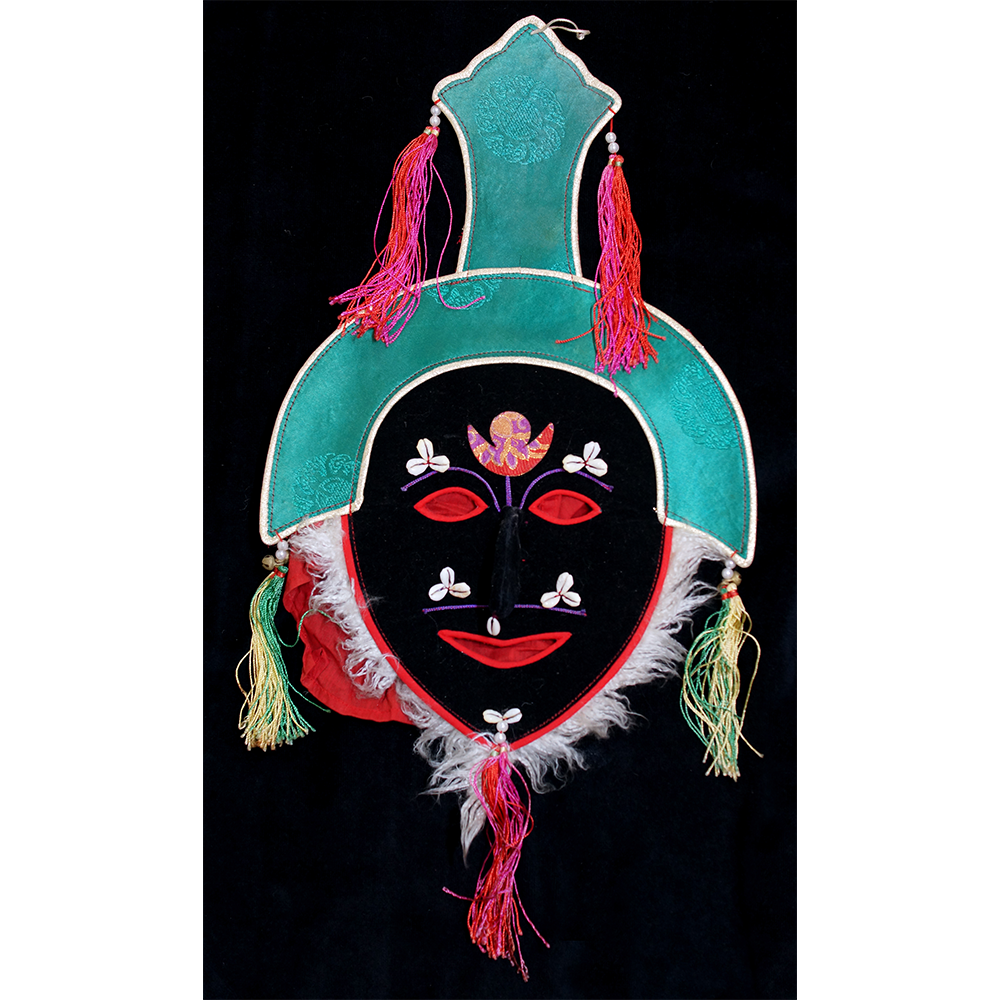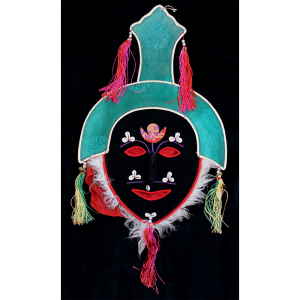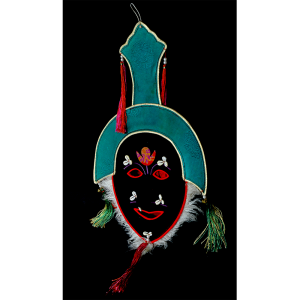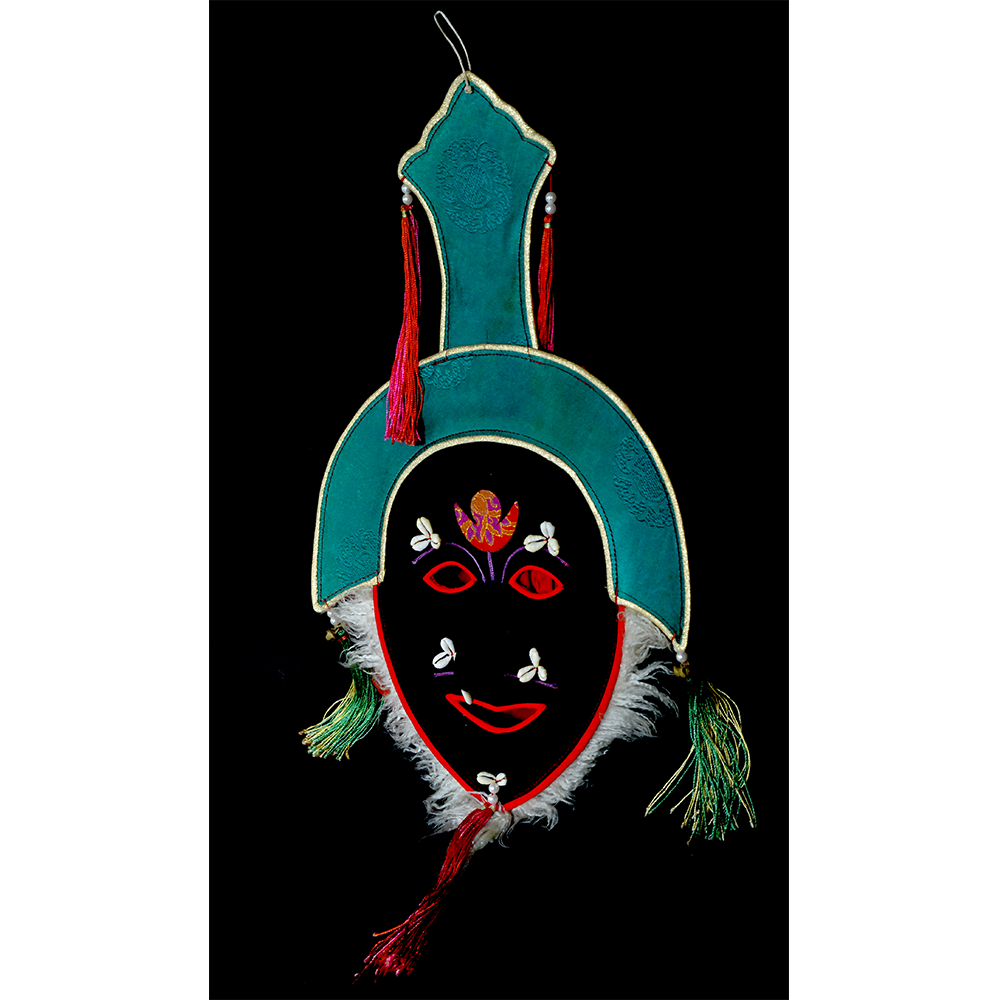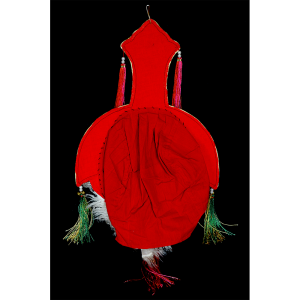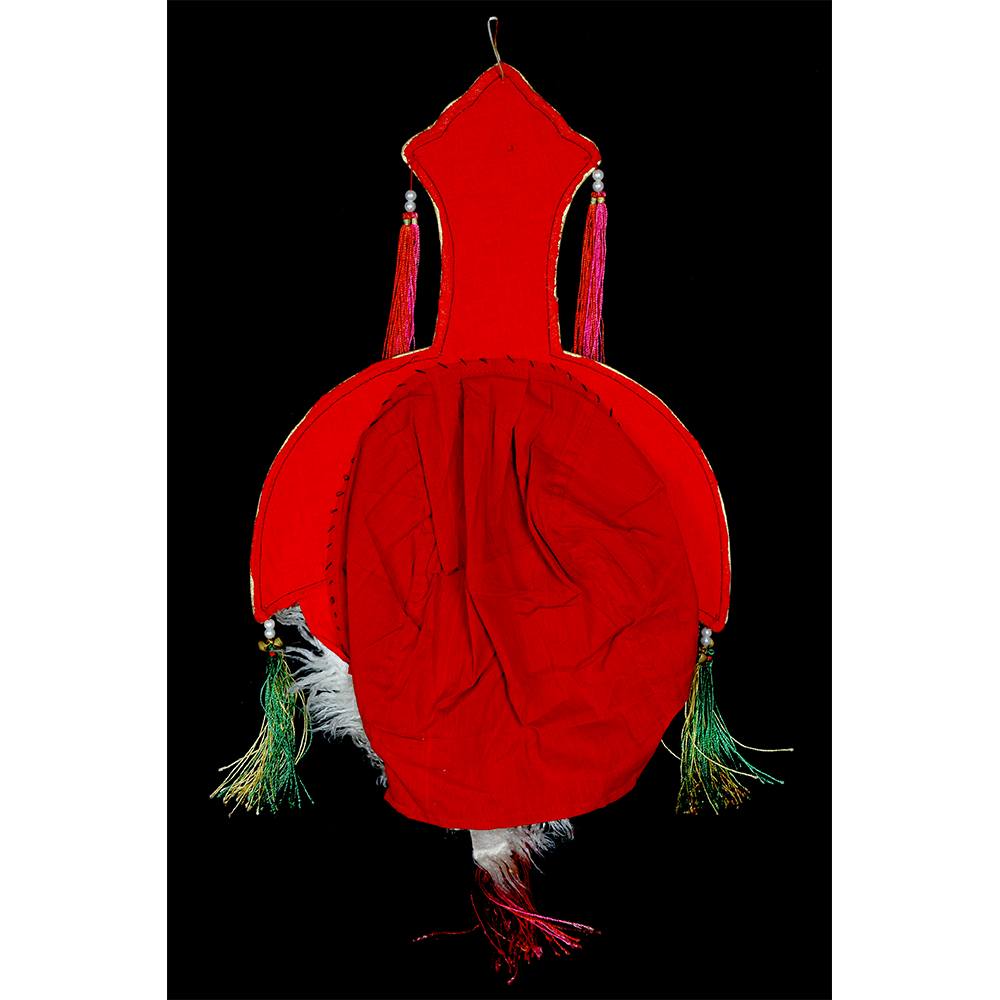TITLE: Rora Reema Moqua
TYPE: face mask
GENERAL REGION: Asia
COUNTRY: China
SUBREGION: Tibet
ETHNICITY: Tibetan
DESCRIPTION: Moqua Mask
CATALOG ID: ASCN010
MAKER: Unknown
CEREMONY: Rora Reema
AGE: ca. 1970s
MAIN MATERIAL: dyed fabric
OTHER MATERIALS: cardboard; silk tassels; yak fur; cowrie shells
Rora reema is the ritual Buddhist dance drama performed during Tibetan operas (Ache Lhamo). The opera has many masked characters, with the color of the mask’s face helping to indicate the actor’s role. The black mask, called moqua, represent a hunter. Yellow and white masks, in contrast, represents Dran Gsong, a saintly old hermit, or Tashi Chopa, a prosperous old man. A blue mask represents ngompa, the fisherman. A red mask indicates a courtly aristocrat. The Rora reema players tell stories in a chanting voice and dance acrobatically to drums and tambourines while wearing cloth masks. At the end of the dance the crowd tosses handfuls of seeds into the air to propitiate the gods and pray for the peace and prosperity.
For more on Tibetan dance dramas, see Ellen Pearlman, Tibetan Sacred Dance: A Journey Into the Religious and Folk Traditions (Rochester, VT: Inner Traditions, 2002).
Click here to watch a video about Ache Lhamo, courtesy of the Tibetan Department of Culture.
